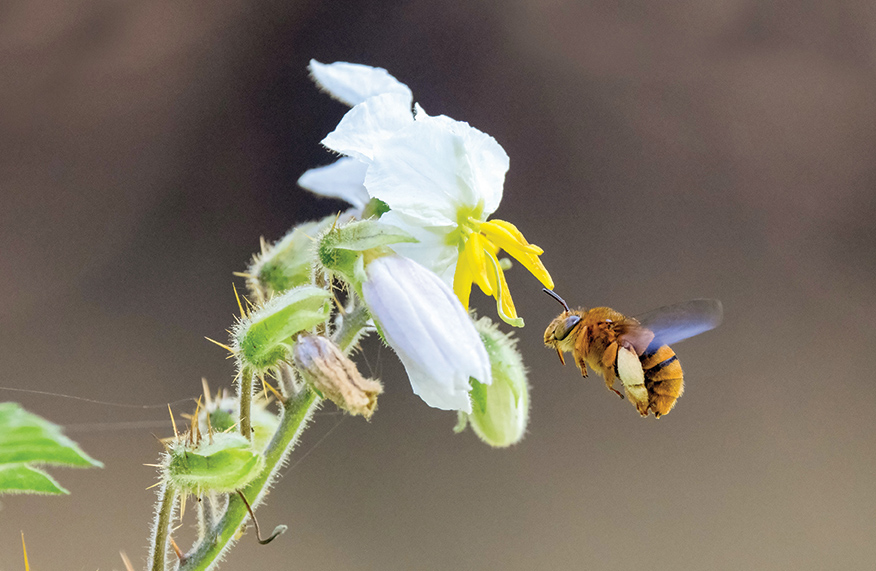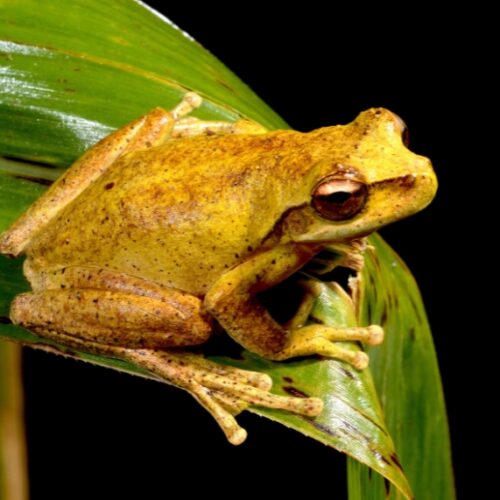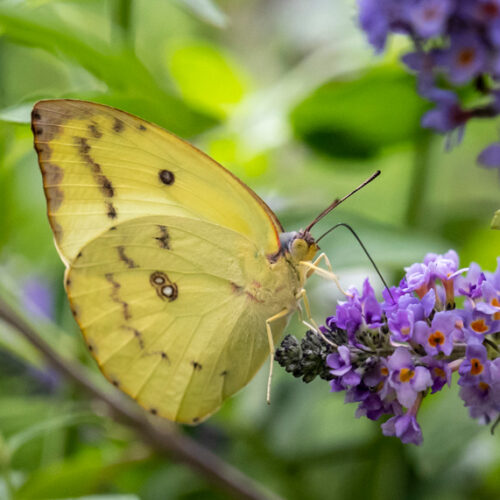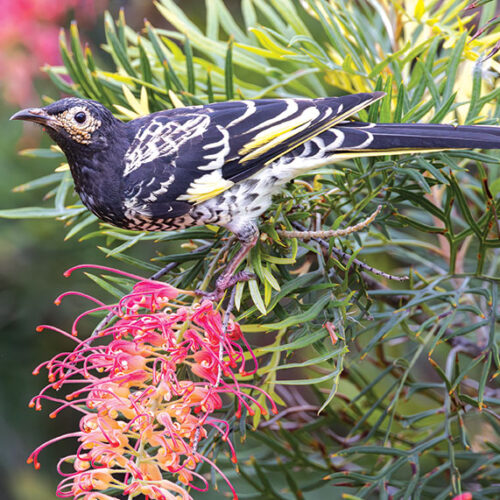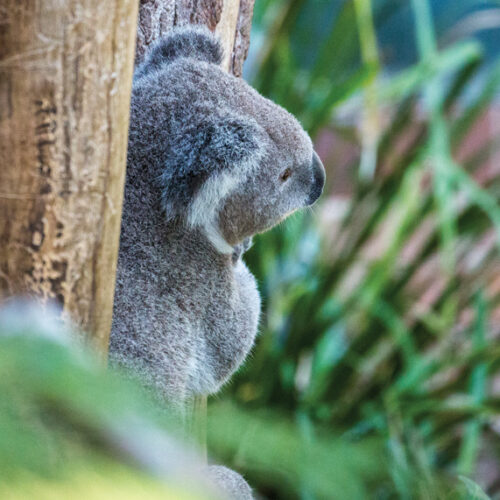Native bees
2025-03-10T10:47:00+11:00
Our native bees are hometown environmental heroes. We can help boost their numbers with a few tweaks to our gardens.
Honeybees are unmistakable visitors to the garden, drifting between flowers to gather nectar and pollen. While they’re rightly famous for their pollination skills and delicious amber elixir, they’re not Australia’s original pollinators. Long before their arrival, a diverse array of native bees had already perfected the art of pollination, forming vital relationships with local plants and ecosystems.
Native bees play an essential role in fruit and seed production, which supports a vast diversity of native wildlife. Their work also ensures the survival of plants that create vital habitats for countless species.
With an estimated 2000 species across five families, these fascinating insects thrive in environments ranging from coastal dunes to deserts – and they’re likely to be in your own garden! They may be tricky to spot at first, but once you tune in, you’ll see them everywhere.
Main native bee groups
TEDDY BEAR (Amegilla – 26 species, pictured above) Fat, furry and golden. Females are quasi-social, nesting near others but in separate burrows.
BLUE-BANDED (Amegilla – 12 species) Similar to honeybees but with striking blue stripes. They adapt well to suburban gardens.
MASKED (Amphylaeus, Hylaeus & Meroglossa) Under 10mm; shiny black with a small yellow ‘mask’ on their thorax. Nest in pithy stems or drilled wood holes.
CARPENTER (Xylocopa – 8 species) The largest native bees. Most females are yellow and black, while males are golden. Some species are metallic green. They nest in dead wood.

CUCKOO (Thyreus & Coelioxys – nine species) 10–14mm; black and white or iridescent blue. They lay eggs in the nests of blue-banded or leafcutter bees.
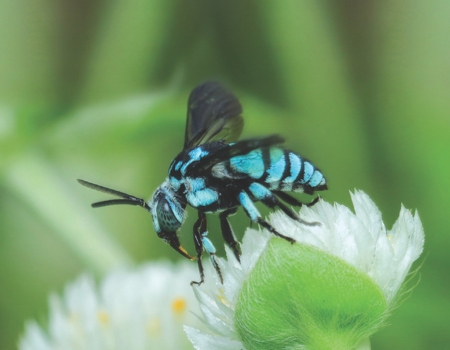
LEAFCUTTER (Megachile – 40 species) 6–15mm; black, often furry, with orange or white stripes. Females cut neat circles from leaves that they use to build nests in bamboo, cardboard tubes, or holes drilled in timber.
HOMALICTUS (Homalictus – 44 species) 8mm; found in black, copper or green. They build intricate underground burrows shared by multiple females.
RESIN (Megachile – 100-plus species) 8–14mm; in red, orange, black or mixed colours. They use resin and chewed leaves to seal nests in dead logs or drilled holes.
REED (Exoneura & Braunsapis – 80-plus species) 7mm; slender-bodied, ranging from black and dark orange to lightly marked. They nest in hollow twigs or dead tree fern fronds.
SWEAT/FURROW (Lasioglossum – 200-plus species) 10mm; black or dark brown, often with broad white stripes. Known as sweat bees due to their attraction to human perspiration.
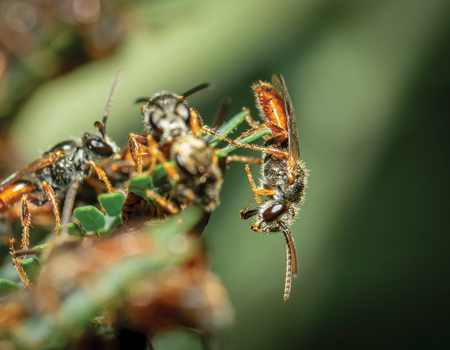
STINGLESS/SUGARBAG (Austroplebeia & Tetragonula – 10 species) 4mm; glossy black with small yellow
or white markings. They are social, forming hives and producing honey.

Header image credit: iStock

